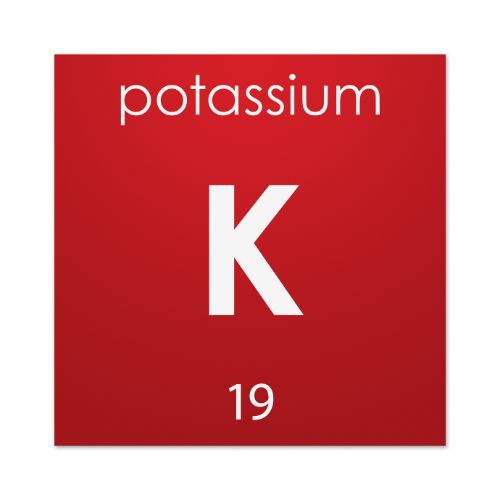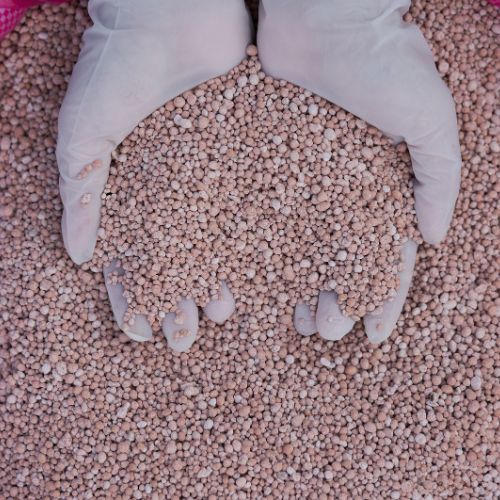NPK stands for Nitrogen (N), Phosphorus (P), and Potassium (K)—the three key nutrients that promote healthy plant growth, enhance soil fertility, and maximize crop yield. This guide will cover everything from the basics of what NPK fertilizer is, to how it’s used, and its crucial role in both organic and inorganic farming practices. Whether you’re a seasoned farmer, a curious home gardener, or someone just starting to explore the world of agriculture, understanding what NPK stands for and how it affects plant growth is vital. We’ll also discuss what a balanced fertilizer looks like, explore the differences in NPK formulations, and provide insights into choosing the right type of NPK fertilizer for various plants and soil types. Let’s embark on this journey to better understand the ingredients in fertilizer and how they work to nourish the plants and soil.
Understanding Fertilizers
Fertilizers are key to achieving thriving plant growth and sustainable agriculture. By breaking down the purposes and types of fertilizers, including the distinction between organic and inorganic options, we aim to provide a comprehensive overview that helps you understand how these substances impact plant health and soil vitality. Let’s get into deep:
Fertilizers and Their Purpose
Fertilizers are substances added to soil to supply one or more nutrients essential to the growth of plants. They play a crucial role in agriculture and gardening by replenishing nutrient deficiencies in the soil and boosting plant health. The primary goal of using fertilizers is to enhance soil fertility and, subsequently, increase crop yields and quality.
Types of Fertilizers: Organic vs. Inorganic
Fertilizers come in two main types: organic and inorganic. Organic fertilizers are derived from natural sources such as compost, manure, and bone meal. They release nutrients slowly, improve soil structure, and increase microbial activity. Inorganic fertilizers, on the other hand, are chemically synthesized and provide a quick supply of nutrients. However, they do not improve soil structure or its long-term fertility as organic options do.
What is NPK?
NPK stands for Nitrogen (N), Phosphorus (P), and Potassium (K), the three macronutrients that are essential for plant growth. Each component serves a unique function:
- Nitrogen helps in the formation of proteins, which are vital for cell growth in plants.
- Phosphorus supports the development of roots, flowers, seeds, and fruits.
- Potassium regulates physiological processes, such as photosynthesis and water uptake, enhancing disease resistance and drought tolerance.
Understanding what NPK stands for and its components is fundamental for any gardener or farmer aiming to optimize plant health and productivity.
Different Types of NPK Fertilizers
NPK fertilizers vary in their nutrient compositions, which are tailored to meet specific crop needs at various stages of growth. For instance, a higher nitrogen content is beneficial for leafy growth, making it ideal for young plants, while increased phosphorus is crucial during the flowering stage. Here’s a closer look at the various formulations of NPK fertilizers and how to choose the best one for your plants.
Balanced Fertilizers
A balanced NPK fertilizer has equal or nearly equal proportions of nitrogen, phosphorus, and potassium. Common ratios include 10-10-10 or 20-20-20. These fertilizers are versatile and are generally used for general garden maintenance and for plants that don’t have specific nutrient requirements. They ensure that plants receive a steady supply of the primary nutrients required for overall health.
High-Nitrogen Fertilizers
Fertilizers with a high nitrogen content, such as a 24-8-16 ratio, are excellent for promoting vigorous leaf and stem growth. These are particularly beneficial for leafy vegetables and grasses that require rapid vegetative expansion. Nitrogen is crucial for chlorophyll production and is a vital component of amino acids within plant structures.


High-Phosphorus Fertilizers
Phosphorus-heavy NPK formulations, such as 10-20-10, are typically used to stimulate root development, flower bloom, and fruit production. These types of fertilizers are ideal during the flowering and fruiting stages of plants or when trying to establish new plants from seeds or transplants. Phosphorus is essential for energy transfer and photosynthesis processes within plants.
High-Potassium Fertilizers
Potassium-rich fertilizers, often seen in ratios like 6-6-18, are crucial for the overall vigor of the plant and help build resistance to diseases and pests. They also support strong root development and enhance the plant’s ability to absorb water and nutrients. These fertilizers are particularly useful during the later stages of plant growth, when plants are maturing and preparing for harvest.

Specialized Fertilizers
In addition to standard NPK fertilizers, there are specialized formulations designed for specific plants or conditions. For example, fertilizers formulated for acidic-loving plants like azaleas and rhododendrons may have a different NPK ratio compared to those intended for vegetable gardens or lawns. Similarly, some fertilizers are enriched with micronutrients like iron, manganese, or calcium, which are tailored to address specific deficiencies in the soil.
Slow-Release and Controlled-Release NPK Fertilizers
Slow-release and controlled-release NPK fertilizers are designed to supply nutrients in a more sustained manner over a period of time, reducing the risk of nutrient leaching and providing a more consistent nutrient supply. These types of fertilizers are typically coated with materials that dissolve over time or under specific environmental conditions, making nutrient availability more predictable and steady.
Liquid NPK Fertilizers
Liquid NPK fertilizers provide nutrients in a soluble form that can be diluted in water and applied directly to the plant foliage or the soil. This method allows for quick uptake by the plants and can be particularly useful for correcting mid-season deficiencies. Liquid fertilizers often require more frequent application than granular forms but can be precisely controlled to meet immediate plant needs.

How to Choose the Right NPK Fertilizer?
Choosing the right NPK fertilizer involves understanding the specific needs of your plants and the current soil conditions. Soil tests can determine nutrient deficiencies, which can guide the selection of an appropriate fertilizer blend. Additionally, consider the stage of plant growth, as different growth phases require different nutrient ratios.
Application of NPK Fertilizers
The application of NPK fertilizers varies depending on the type of fertilizer and the specific plant requirements. Generally, it can be applied directly to the soil or mixed with water and used for irrigation. Proper application ensures nutrients are available at the right time and in the right amounts to support optimal plant growth.

Benefits of NPK Fertilizers
NPK fertilizers offer a plethora of benefits to plants, from enhanced growth and yield to improved resistance against diseases and pests. Let’s get to the key advantages of using NPK fertilizers, focusing on how they contribute to plant health, increase productivity, and ensure long-term soil fertility.
Enhanced Plant Growth and Yield
By providing essential nutrients, NPK fertilizers significantly enhance plant growth and yield. They ensure plants have the necessary components to develop robustly and produce abundantly.
Improved Resistance to Pests and Diseases
Adequate nutrition from NPK fertilizers strengthens plants’ natural defenses against pests and diseases, reducing the need for chemical pesticides.
Benefits to Soil Health and Fertility
While primarily aimed at feeding plants, NPK fertilizers can also contribute to maintaining soil fertility, especially when used judiciously and in combination with organic amendments.

Potential Downsides and Risks
Despite their benefits, the misuse of NPK fertilizers can lead to environmental concerns, such as water pollution and soil degradation. Over application can cause nutrient run-off into nearby water bodies, leading to eutrophication.
Future of Fertilizers
The future of fertilizers likely involves the development of more sustainable and environmentally friendly products, including slow-release and nutrient-efficient formulas that minimize environmental risks while maximizing plant health.
Conclusion
NPK fertilizers, when used correctly, offer a balance of nitrogen, phosphorus, and potassium that can significantly enhance plant health and productivity. By understanding what NPK stands for and how to effectively apply these fertilizers, gardeners and farmers can achieve better crop yields while also contributing to sustainable agricultural practices.
FAQs on NPK Fertilizer
What Does NPK Stand for?
NPK stands for Nitrogen (N), Phosphorus (P), and Potassium (K). These are the three primary nutrients that are essential for plant growth. Each letter in the acronym NPK represents one of these key elements, which are the main ingredients in fertilizers used to enhance soil nutrient content and promote healthy plant development.
What Does NPK Do for Plants?
NPK fertilizers play a crucial role in plant health and development by supplying essential nutrients:
Nitrogen (N) is vital for the growth of leaves and stems, as it is a major component of chlorophyll, the compound plants use in photosynthesis.
Phosphorus (P) is essential for the development of roots, flowers, seeds, and fruits and plays a role in energy transfer within the plant, helping to transform solar energy into chemical energy.
Potassium (K) contributes to overall plant health by regulating key processes, including water uptake, enzyme activation, and photosynthesis, making plants more resistant to drought, frost, diseases, and pests.
What Fertilizer Has Nitrogen Phosphorus and Potassium?
Any fertilizer labeled as an NPK fertilizer contains Nitrogen, Phosphorus, and Potassium. These fertilizers can come in various formulations and ratios depending on the specific needs of the plants or the deficiencies in the soil. Examples of common NPK ratios include 10-10-10, 20-20-20 (balanced), or 16-4-8 (high in nitrogen), each designed to support different growth stages and plant types.
What Is a Balanced Fertilizer?
A balanced fertilizer is one where the proportions of Nitrogen, Phosphorus, and Potassium are equal or close to equal. These ratios are typically depicted in formulations such as 10-10-10 or 20-20-20, indicating an equal percentage of each primary nutrient. Balanced fertilizers are versatile and can be used for general garden maintenance and for plants that do not have specific nutrient demands.
What Is the Normal Range of NPK in Soil?
The normal range of NPK in soil varies widely depending on the type of soil, the environment, and the plants being cultivated. Generally, ideal soil nutrient ranges for NPK are as follows:
- Nitrogen (N): 20 to 250 ppm (parts per million)
- Phosphorus (P): 10 to 50 ppm
- Potassium (K): 100 to 400 ppm
These ranges can vary, and it is often recommended to conduct a soil test to determine the specific nutrient levels present in your soil. This helps in selecting the right type of NPK fertilizer to balance the soil nutrients for optimal plant growth.




